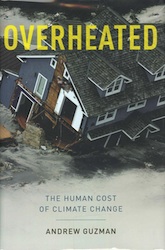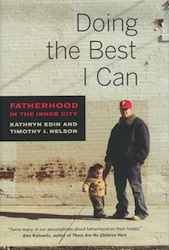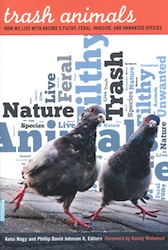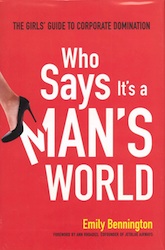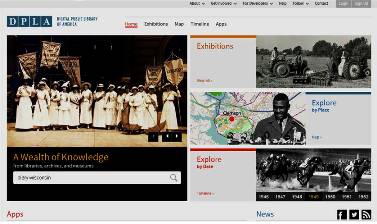As I write, the number six best seller on Amazon.com is nonfiction. It’s the Diagnostic and Statistical Manual of Mental Disorders, Fifth Edition (DSM-5) by the American Psychiatric Association. This could change next hour, as the list is updated that often, but for the time being, the DSM-5 is hovering near the apex of the Amazon Best Sellers list of top 100 titles, which it has been on for 87 days.
The DSM-5 is not casual reading, although many lay persons (typically patients) do consult it, but is rather aimed at specialists such as clinicians, researchers, insurers, and students in those fields. According to its preface, it is “intended to serve as a practical, functional, and flexible guide for organizing information that can aid in the accurate diagnosis and treatment of mental disorders.” Why is it important for you to know about the DSM-5? It can be consulted to find higher quality information than might be found by searching the Internet. According to the DSM-5 Development website, it “contains a listing of diagnostic criteria for every psychiatric disorder recognized by the U.S. healthcare system.” For consistency’s sake, it also coordinates with the World Health Organization’s International Classification of Diseases. The DSM-5 may not be a riveting classic, but it has it’s value.
What can the DSM-5 tell you? Let’s say, hypothetically, that a doctor has diagnosed you with a caffeine-related disorder. Specifically, you are experiencing caffeine withdrawal (292.0 [F15.93]). In the Manual you will find diagnostic criteria and features, prevalence, development and course, risk and prognostic features, and other important information. In this case, you will find that:
- You are not alone, since “more than 85% of adults and children in the United States regularly consume caffeine”
- You demonstrate “the presence of a characteristic withdrawal syndrome that develops after the abrupt cessation of (or substantial reduction in) prolonged daily caffeine ingestion,” such as headache or fatigue
- You experience symptoms that “can vary from mild to extreme, at times causing functional impairment in normal daily activities”
- You may feel bad for a while, as “symptoms usually begin 12–24 hours after the last caffeine dose” and may “last for 2–9 days, with the possibility of withdrawal headaches occurring for up to 21 days”
All this and more is available at your fingertips.
Opinions on the DSM-5 vary. Amazon’s Customer Reviews are all over the place, with the vast majority of reviewers giving it either one or five stars. Why the divisiveness? You can check in with some of those more in the know. In DSM-5: An Overview of Changes and Controversies ![]() , Jerome C. Wakefield selectively surveys “what is new in DSM-5, why changes were made, and what about them is so controversial.” (Clinical Social Work Journal, May 22, 2013). There are also reviews available free online, such as How Psychiatry Went Crazy by Carol Tavris in the Wall Street Journal, The New Crisis in Confidence in Psychiatric Diagnosis by Allen Frances in the Annals of Internal Medicine, and Director’s Blog: Transforming Diagnosis by Thomas Insel on the National Institute of Mental Health website. There are even books devoted to the bigger mental illness picture, such as Saving Normal: An Insider’s Revolt Against Out-of-Control Psychiatric Diagnosis, DSM-5, Big Pharma, and the Medicalization of Ordinary Life, which is held at UW-Madison and UW-Stout, and will soon be available for checkout using UW Request.
, Jerome C. Wakefield selectively surveys “what is new in DSM-5, why changes were made, and what about them is so controversial.” (Clinical Social Work Journal, May 22, 2013). There are also reviews available free online, such as How Psychiatry Went Crazy by Carol Tavris in the Wall Street Journal, The New Crisis in Confidence in Psychiatric Diagnosis by Allen Frances in the Annals of Internal Medicine, and Director’s Blog: Transforming Diagnosis by Thomas Insel on the National Institute of Mental Health website. There are even books devoted to the bigger mental illness picture, such as Saving Normal: An Insider’s Revolt Against Out-of-Control Psychiatric Diagnosis, DSM-5, Big Pharma, and the Medicalization of Ordinary Life, which is held at UW-Madison and UW-Stout, and will soon be available for checkout using UW Request.
If you’d like to consult the DSM-5 or just give it the once over, try Andersen Library’s online copy. To get to it, access the DSM IV-TR Online ![]() and click on the DSM-5 tab. Either use the Advanced Search and limit to “Diagnostic and Statistical Manual of Mental Disorders, 5th Edition” before you run your search, or run your search in the default search box that appears on the screen, then rerun it by changing “Journals” to “Diagnostic and Statistical Manual of Mental Disorders, 5th Edition” and pressing the search (magnifying glass) icon again.
and click on the DSM-5 tab. Either use the Advanced Search and limit to “Diagnostic and Statistical Manual of Mental Disorders, 5th Edition” before you run your search, or run your search in the default search box that appears on the screen, then rerun it by changing “Journals” to “Diagnostic and Statistical Manual of Mental Disorders, 5th Edition” and pressing the search (magnifying glass) icon again.
As for me, writing this review has given me a headache. Or maybe that’s because I forgot my morning cup of joe. Either way, I’m going to sign off.
Have a great day and remember to always check with your health care professional for an official diagnosis and treatment recommendations.

